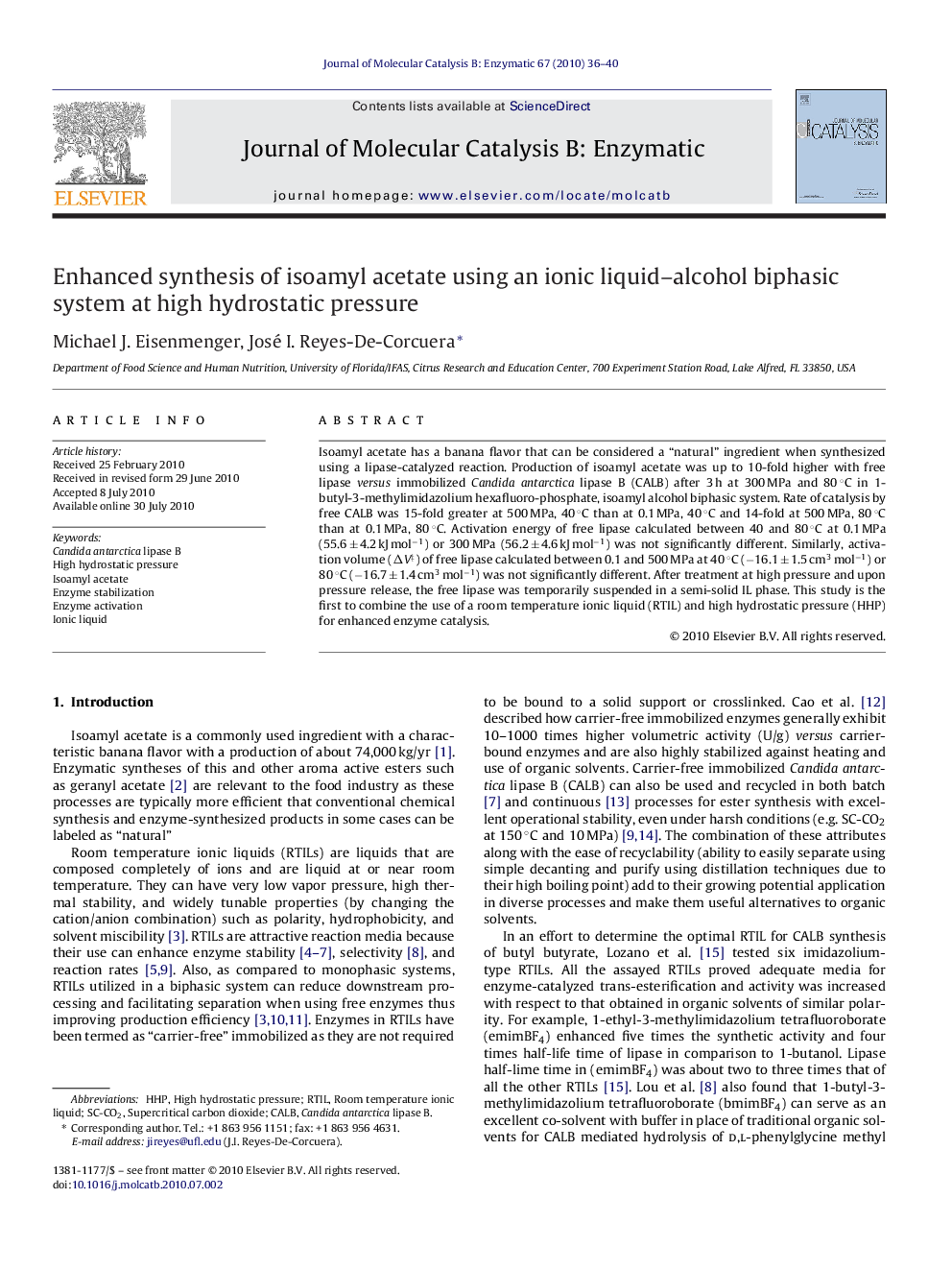| Article ID | Journal | Published Year | Pages | File Type |
|---|---|---|---|---|
| 70865 | Journal of Molecular Catalysis B: Enzymatic | 2010 | 5 Pages |
Isoamyl acetate has a banana flavor that can be considered a “natural” ingredient when synthesized using a lipase-catalyzed reaction. Production of isoamyl acetate was up to 10-fold higher with free lipase versus immobilized Candida antarctica lipase B (CALB) after 3 h at 300 MPa and 80 °C in 1-butyl-3-methylimidazolium hexafluoro-phosphate, isoamyl alcohol biphasic system. Rate of catalysis by free CALB was 15-fold greater at 500 MPa, 40 °C than at 0.1 MPa, 40 °C and 14-fold at 500 MPa, 80 °C than at 0.1 MPa, 80 °C. Activation energy of free lipase calculated between 40 and 80 °C at 0.1 MPa (55.6 ± 4.2 kJ mol−1) or 300 MPa (56.2 ± 4.6 kJ mol−1) was not significantly different. Similarly, activation volume (ΔV‡) of free lipase calculated between 0.1 and 500 MPa at 40 °C (−16.1 ± 1.5 cm3 mol−1) or 80 °C (−16.7 ± 1.4 cm3 mol−1) was not significantly different. After treatment at high pressure and upon pressure release, the free lipase was temporarily suspended in a semi-solid IL phase. This study is the first to combine the use of a room temperature ionic liquid (RTIL) and high hydrostatic pressure (HHP) for enhanced enzyme catalysis.
Graphical abstractFigure optionsDownload full-size imageDownload as PowerPoint slideResearch highlights▶ High hydrostatic pressure increased stability and activity of lipase in ionic liquid–alcohol system. ▶ Activation energy at selected pressures was not significantly different. ▶ Activation volume at selected temperatures was not significantly different. ▶ Lipase activity increased monotonously with temperatures up to at least 80 °C.
